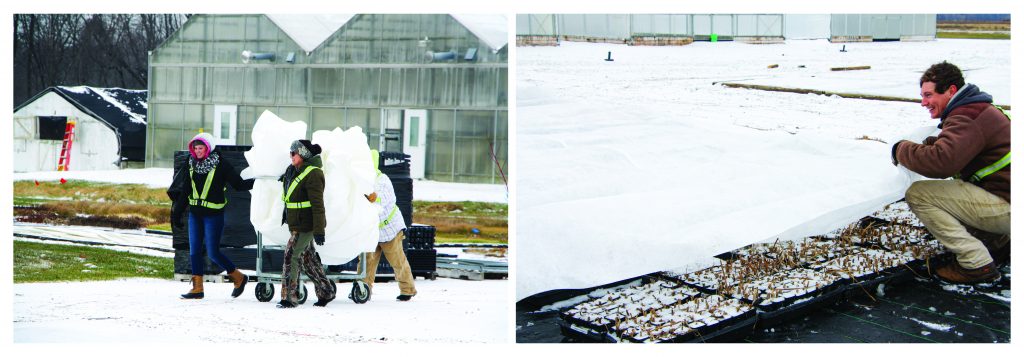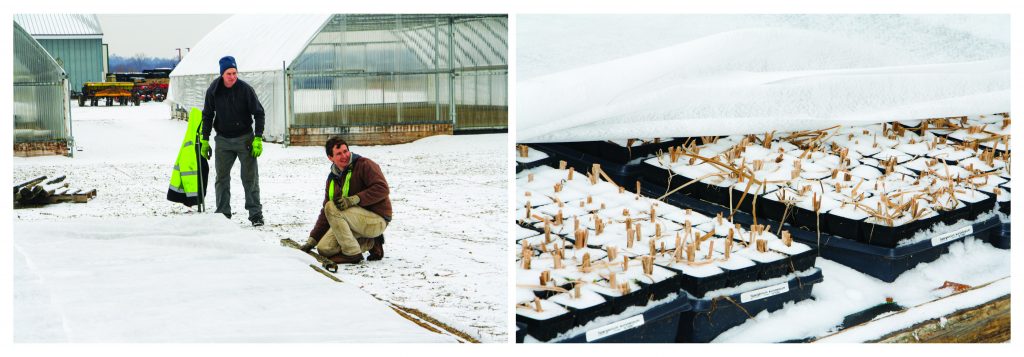The first snows have fallen, the Sandhill Cranes have headed South and Thanksgiving dinner has been eaten. That means it’s bedtime for potted plants. As growers of native, wild-type perennials, we have the luxury of handling winter hardy plant stock. But even natives need a proper bedtime routine.
At Taylor Creek, late November and early December usually brings winterizing, purging, inventorying, and putting potted plants under blankets for a long winter sleep. It’s one last push before our outdoor work is (mostly) complete for the season. But that doesn’t mean we’re taking the winter off – more about that in a future blog.
Getting our plants ready for winter always feels something like a mix of the grueling final mile of a race and an end of season celebration. There will be a few bruised fingers, cold drippy noses, perhaps some lost patience, plenty of hot cocoa and tea, and a satisfying sense of accomplishment. It’ll get done and it will feel great.
Putting plants down for the winter, “over-wintering”, simply put means consolidating everything down into a tight group, ensuring moisture levels are just right, and securing frost blankets in place. And then we hope for, but are not assured of, a good heavy snow cover that lasts the winter.
Why the blankets? Potted native plants, unlike those planted and established in the ground, need protection from temperature and moisture fluctuations which can cause plants to rot during thaws and freezer burn during cold dry periods. And, if outdoor temperatures change rapidly (you know they will), crowns can crack or shatter which means a loss of those plants.
If over-wintering is done properly and if winter weather conditions are favorable, approximately 90% of the plants will successfully over-winter. Losses of weaker plants and some rodent damage are inevitable, but by and large, a good crop of mature native plants will wake up sometime in early March (weather depending).
Even with ideal conditions, there are a few species that seem to refuse to over-winter well in pots, and there are always surprises. If you are planning an early-season planting, it’s a good idea to pre-order now so we can plan a back-up crop for your project, particularly for those sensitive species.
We love to over-winter plants outdoors because it means our projects receive proven, harden-off plants, as early as March, which is not possible with soft greenhouse-grown stock. For us, it’s worth the extra effort.


